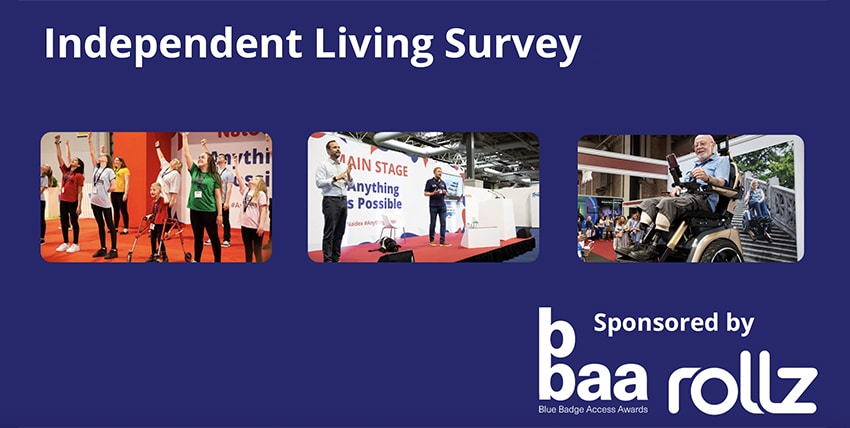This blog is written using details from the latest Naidex Independent Living Survey, and represents an overview of the most interesting and pertinent feedback, with some clinical reflections.
The links between engagement in meaningful activity and long-term wellbeing are well established, both for physical and mental health. We can all testify in recent years to the impact of our activities being restricted, and therefore reflect on the impact that long-term restriction to activities due to inaccessibility would have.
The truth is that this is reality for a lot of people with limited mobility or other challenges that impact on accessibility. The first reflection of this should focus on what creates the challenge; indeed, as occupational therapists we often refer to the environment being disabling, rather than the person being ‘disabled’.
This is supported by the survey results which concluded that 55% of its 804 participants felt that there is a lack of accessible homes being built, and 57% did not agree that event venues provide a good level of accessibility.
To put that into context, 458 participants of this single survey would have to reconsider going to the cinema, theatre or concert that others can enjoy spontaneously.
As well as the environmental barriers that people face, ensuring they have the correct and appropriate walking aid, or assistive technology is highlighted as a significant concern. In the survey an average of 32% (256) answered negatively when asked if they (1) feel confident that they would be correctly assessed for a mobility aid (2) felt there was sufficient funding available to purchase mobility equipment, and (3) whether they were able to visit local retailers easily.
It is concerning that such a high percentage of respondents lacked confidence in the mobility assessment and highlights the impact of a recommendation that is not client centred and goal focused.
The assessment stage must consider the physical and cognitive strengths of the individual, the activities that they engage in, and the environments in which they engage, to ensure that the person is able to maximise their activity and potential.
Funding is a challenge and it’s difficult to always know the answer. It is understandable that statutory services, such as councils and local authorities in the UK, have budgetary limits; it is after all their responsibility to manage public funds raised from the taxpayer. It is however the responsibility of health care professionals to challenge practice and commissioning to ensure that stocked items meet the ongoing and changing needs of their community.
As part of this responsibility, all parties should be educated and informed about return on investment through sustainable design. For example, the modular design of the Rollz rollator ensures that not only does this single product meet the needs of the community as a whole, but that of the individual’s changing needs. Investing in products that support sustainability and financial efficiency would in the longer-term allow organisations to invest more in non-standard, specialist or bespoke equipment which may otherwise be unattainable.
The issue of accessibility of local retailers is within the gift of the distributor and supplier. Ensuring that processes are inclusive and accessible is core to any successful business in the healthcare sector.
Other key findings from the survey include the impact of inaccessible public transport services, and concerns over cost of living, each of which hold their own significant place within the accessibility and inclusive social discussion.
Rollz’s mission is to provide sustainable and durable solutions that help people continue living an active and independent life by creating mobility aids that are not only functional but stylish and easy to use. Whether through a rollator that turns in to a wheelchair or a walker that can be used both indoors and outdoors, Rollz is committed to helping people maintain their independence as needs change, through innovation.
Adam Ferry, The OT Service
